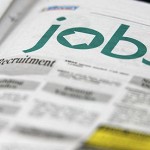 Efforts to promote equality in the workplace may be backfiring. Researchers from Lancaster University have found that language in UK job advertisements often unintentionally reinforces gender segregation and does little to improve racial diversity. The study, the largest of its kind, analyzed 28.6 million job ads between 2018 and 2023, linking their wording to workforce demographics. The findings reveal that while words matter, they are not enough to create real change.
Efforts to promote equality in the workplace may be backfiring. Researchers from Lancaster University have found that language in UK job advertisements often unintentionally reinforces gender segregation and does little to improve racial diversity. The study, the largest of its kind, analyzed 28.6 million job ads between 2018 and 2023, linking their wording to workforce demographics. The findings reveal that while words matter, they are not enough to create real change.
When Words Divide
Job ads do more than list qualifications; they send signals about who belongs in a role. By using family-friendly terms or inclusive language, employers may inadvertently deepen workforce divides.
- Gender Segregation:
Ads for jobs in female-dominated industries often emphasize family-friendly benefits like flexible hours or work-life balance. While this attracts women, it discourages men from applying, reinforcing gender divides. - Breaking Stereotypes:
Interestingly, some “feminine” language, such as cues about soft skills or caring roles, can have the opposite effect. These traits sometimes deter female candidates, pushing workforces toward a more balanced gender mix. - Stalled Racial Diversity:
Employers in industries with more racial minorities often highlight workplace diversity and inclusion policies in their ads. However, such language appears to have no measurable impact on increasing racial diversity within these industries.
A Two-Way Street
The study also shows that workforce composition influences job ad language. Workplaces with more women are more likely to emphasize family-friendly policies, while those with more racial diversity tend to highlight inclusive culture and equality pledges. This feedback loop creates a cycle where existing demographic trends shape the tone of job ads, which in turn affects who applies.
The research highlights the limits of language-focused interventions. Ads that use diversity pledges or family-friendly language can signal inclusion, but without broader structural changes, they fail to address the underlying causes of workforce inequality. These cues can even worsen segregation by unintentionally deterring applicants from underrepresented groups.
“Window-dressing” diversity in job ads is not enough, the authors argue. To achieve meaningful progress, employers must rethink how they communicate their values and make systemic changes to ensure equality throughout the hiring process.
A Call to Action
The study offers insights for policymakers and companies eager to promote diversity. As artificial intelligence becomes more common in drafting job ads, there is an opportunity to embed fairness into these tools. Employers should focus on how AI systems can eliminate subtle biases and craft ads that encourage a wider range of applicants without reinforcing stereotypes.
The findings also highlight the importance of transparency. Employers need to align their public messaging with genuine efforts to improve diversity, such as offering mentoring programs, equitable pay, and clear paths to advancement for underrepresented groups. Without these changes, job ads risk remaining a superficial fix for deeper problems.
By rethinking their approach, organizations can move beyond empty promises and create workplaces that truly reflect the diversity of the societies they serve.